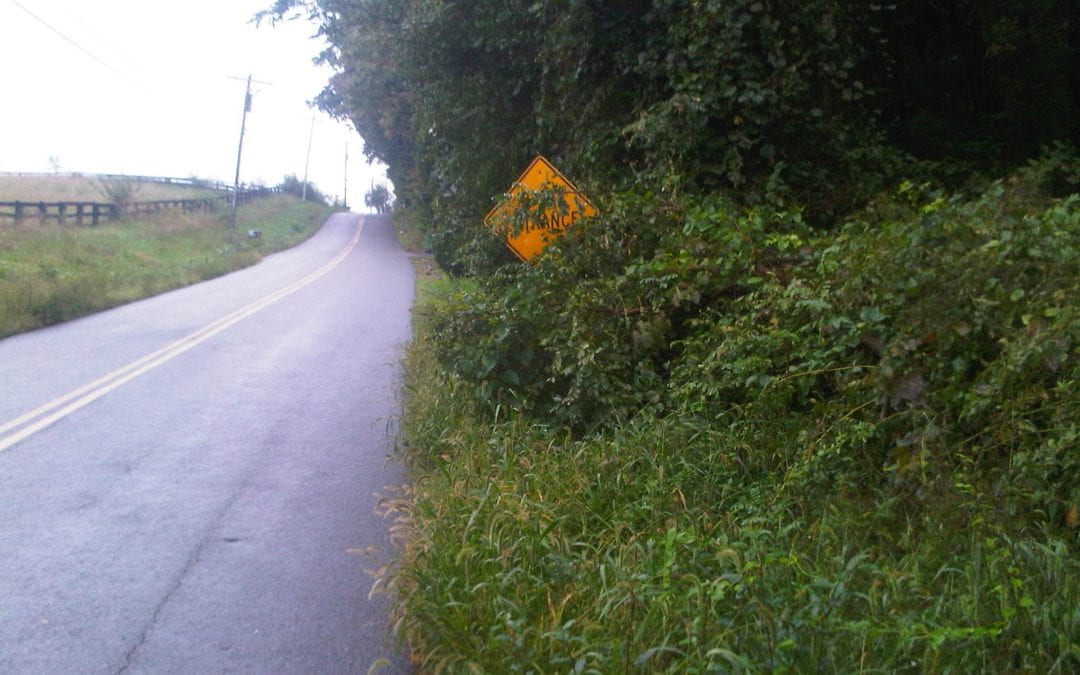Road signs, pavement markings, signals, temporary traffic controls, and all other devices are prescribed by the Manual on Uniform Traffic Control Devices (MUTCD), which strives to ensure that only those devices necessary to assist the traveling public (drivers, pedestrians, bicyclists, etc.) are deployed (thereby decreasing the sensory overload that is the driving, biking, or even walking experience), and that they are consistent in design, placement, and maintenance so as to be most effective.
As roadway agencies, we are often asked to erect signs or deploy other devices as a (perhaps understandable) knee-jerk reaction to a community problem. For example, a hidden driveway sign may be requested where the real issue is a speeding problem (i.e., the driveway is not hidden at the posted speed limit), an 18 mph speed limit sign may be requested to “grab their attention,” or stop signs may be placed at all four legs of a residential intersection with clearly adequate sight distances to “slow everyone down” (that’s not what stop signs are for).
When we compromise on such deployments, we dilute the effectiveness of traffic control devices in general. Guidance from the MUTCD tells us that, “to be effective, a traffic control device should meet five basic requirements:
- Fulfill a need;
- Command attention;
- Convey a clear, simple meaning;
- Command respect from road users; and
- Give adequate time for proper response.”
Using the example of the hidden driveway sign (where the real issue is one of speeding), there is a need, but the sign will not likely fulfill it. Irresponsible drivers are exceeding the speed limit and putting themselves and others in danger. If the speed limit was properly established, we can only conclude that motorists are driving irresponsibly, and let us be clear, by choice. Consciously. A driver that disregards a speeding sign is likely to disregard others. Clearly, targeted enforcement is the only thing to change the mind of a reckless driver with disregard to the welfare of others.
Many signs and pavement markings were enlarged in the 2009 Edition of the MUTCD to command greater attention. Do not enter signs, yield here to pedestrian signs, and school zone signs were enlarged and many edge and centerline stripings were widened. Research had shown that in these specific instances, the smaller devices were insufficient to command attention.
Further, notice that regulatory devices don’t ask; they tell. We don’t have a sign that says, “please resist the urge to park from here to the corner;” instead, we say, “no parking” because it is a command rather than a request.
The driver is processing a massive amount of information and our traffic control devices should be as concise and clear as possible. Hence, we don’t have a “be on the lookout for pedestrians because they sometimes cross here” sign; instead, we say, “yield to pedestrians.” That is a clear, simple message.
A sign, pavement marking, or temporary traffic control drum that is not maintained does not command respect from road users. Indeed, as devices are allowed to significantly degrade (or become covered in vegetation, as we see here), a motorist could be excused (not really) for imagining that, “it’s not an important message or they would maintain it better).” As noted in a later support statement, “Clean, legible, properly mounted devices in good working condition command the respect of road users.”
The need for adequate time for a road user to understand and respond to a device is reflected in many areas of the MUTCD, such as the spacing of signs or temporary traffic control devices (drums, cones, etc.) and the length of pavement marking tapers. Roadway speeds are a primary factor for determining these distances.
The MUTCD also guides us that, “the proper use of traffic control devices should provide the reasonable and prudent road user with the information necessary to efficiently and lawfully use the streets, highways, pedestrian facilities, and bikeways.” Note that devices are not designed around those who would speed, drive under the influence, operate a poorly maintained vehicle, or otherwise drive recklessly. We believe the proper use of traffic control devices using the five fundamentals listed above will direct the reasonable and prudent driver how to responsibly and safely use the roadway. Drivers or other users of the roadways (e.g., pedestrians and bicyclists) that are unwilling to obey properly installed and maintained devices are under the purview of law enforcement.
So the next time your agency is pressed to put up a sign or install a pavement marking that is inconsistent with the MUTCD, ask yourself what the real or perceived problem is, gather as much information as you can, and evaluate alternative approaches that might have a greater chance of mitigating the issue without compromising the expectations road users have of traffic control devices.
The Delaware T2/LTAP Center’s Municipal Engineering Circuit Rider is intended to provide technical assistance and training to local agencies, so if you have MUTCD questions or other transportation issues, contact Matt Carter at matheu@udel.edu or (302) 831-7236.
See the RMC website for further descriptions, details, and registration links. If you have questions, contact Sandi Wolfe at (302) 831-4094 or at sandiw@udel.edu.
[1]Delaware MUTCD, Part 1, Section 1A.02, ¶02
[2]Delaware MUTCD, Part 1, Section 1A.05, ¶03
[3]Delaware MUTCD, Part 1, Section 1A.02, ¶06

